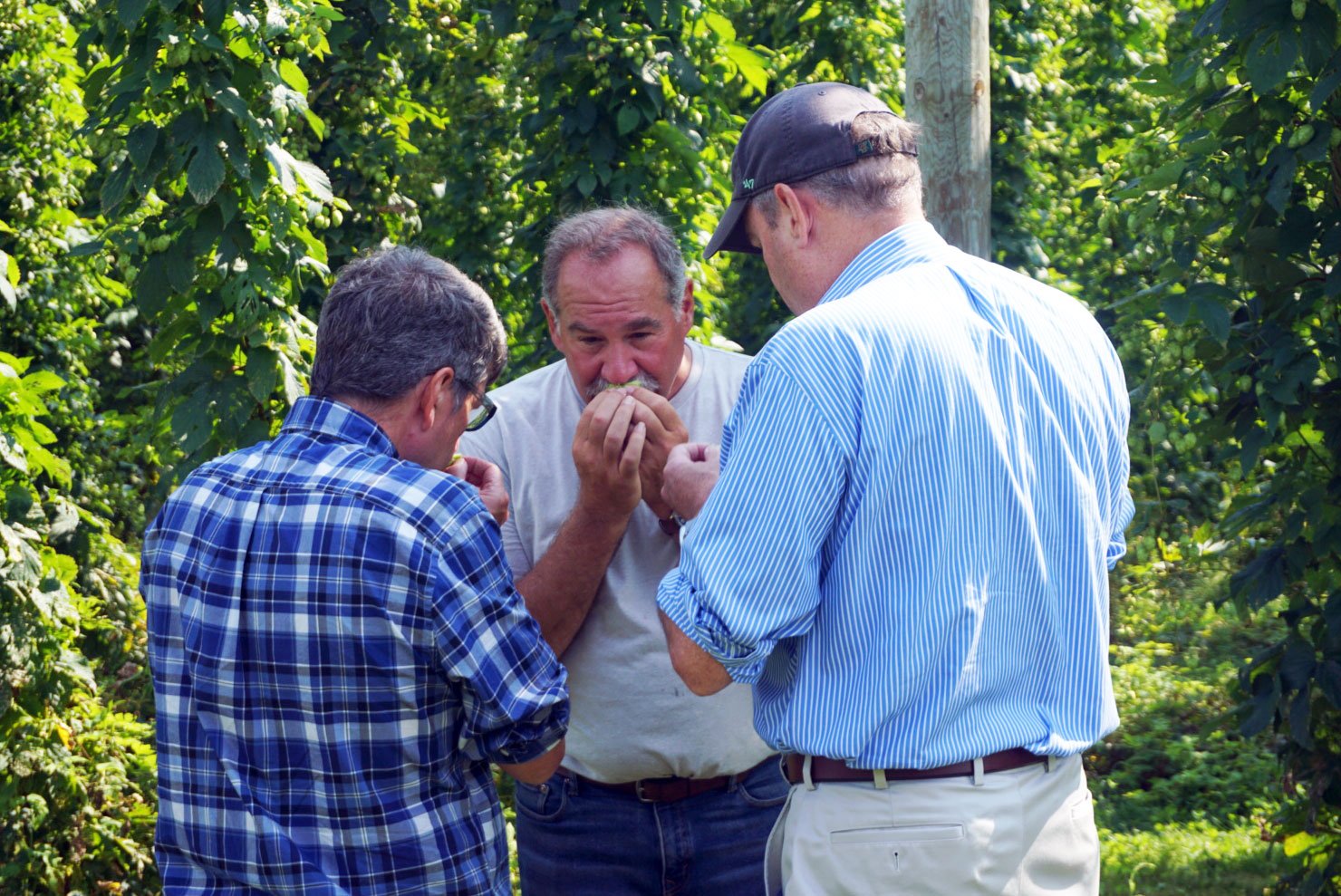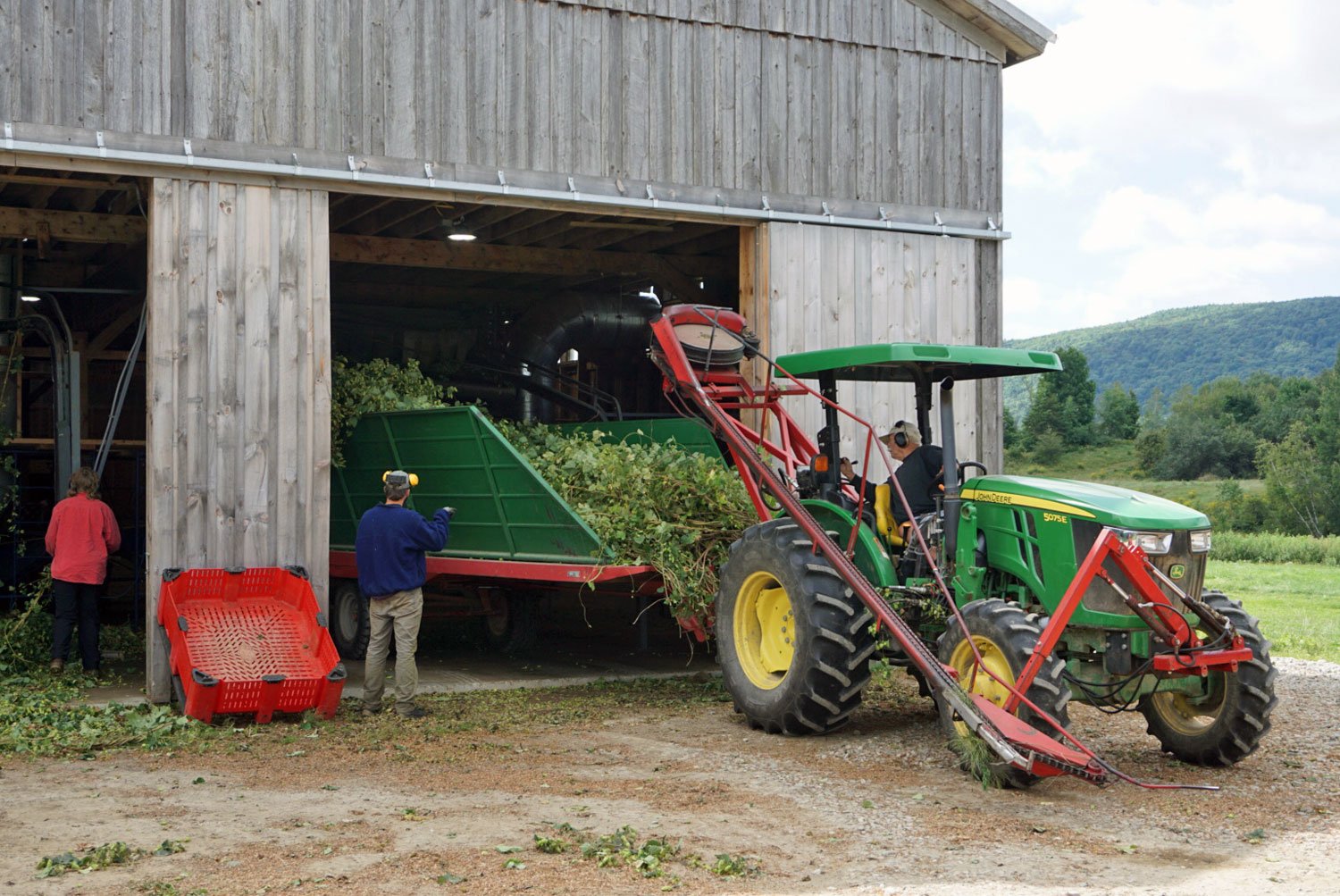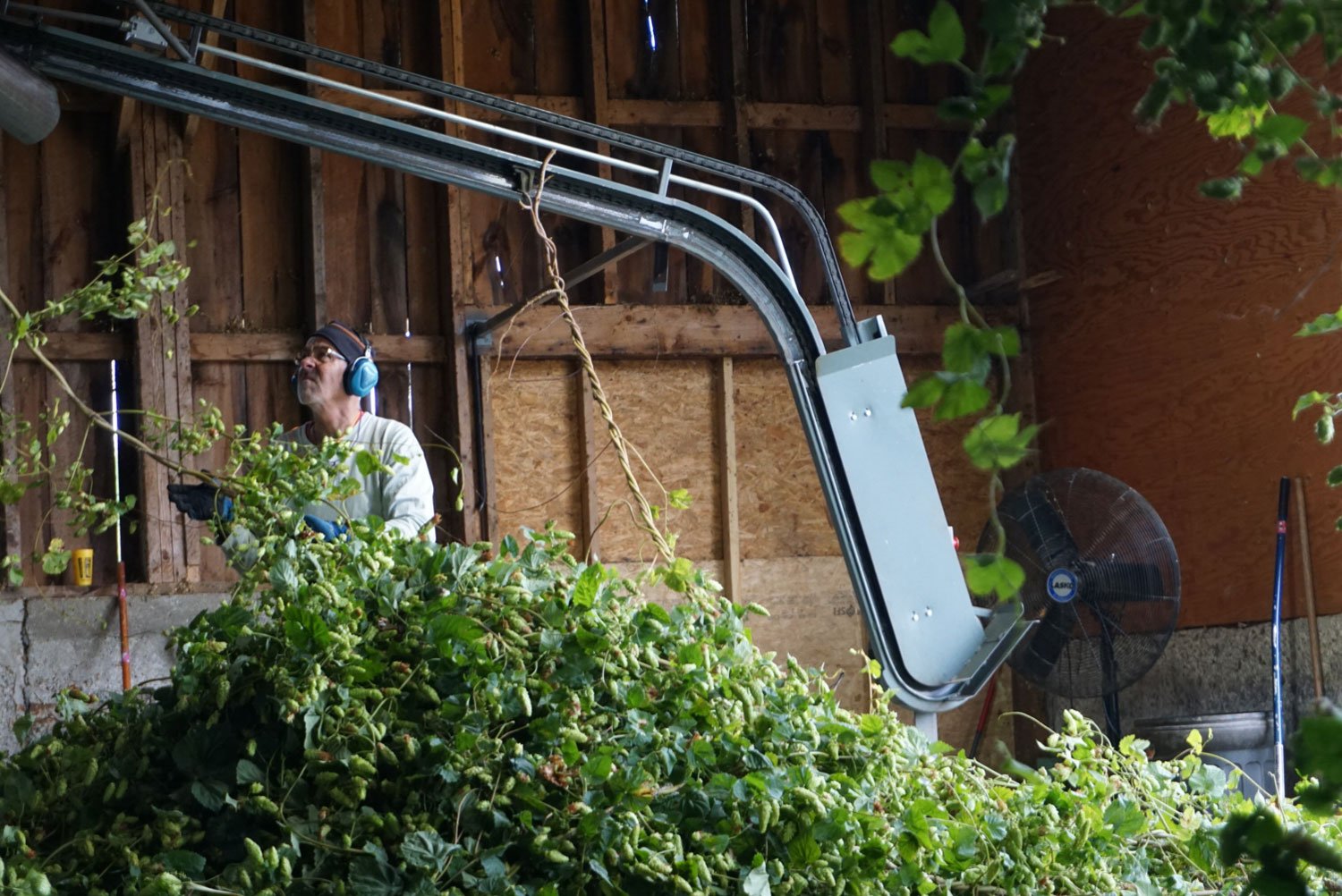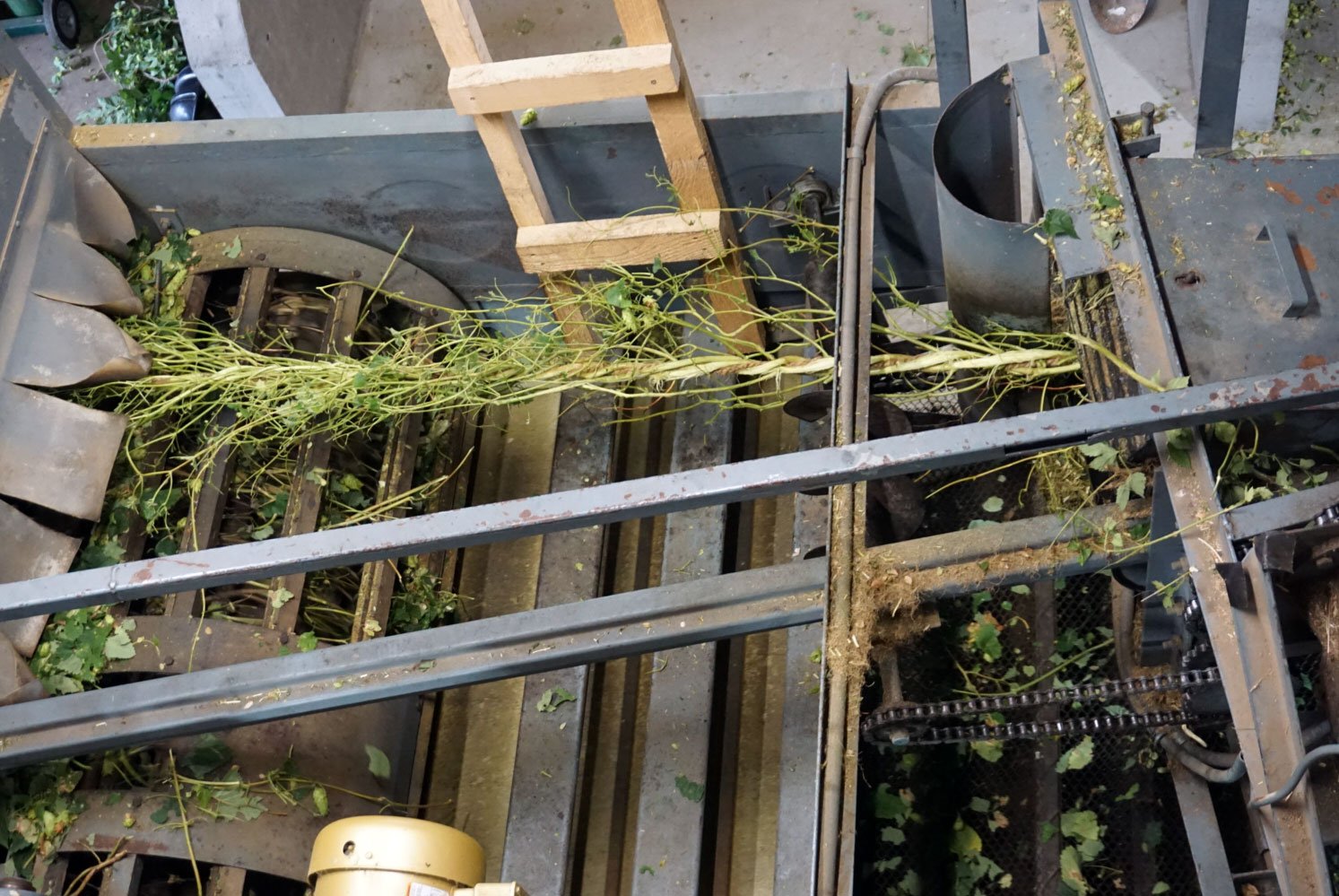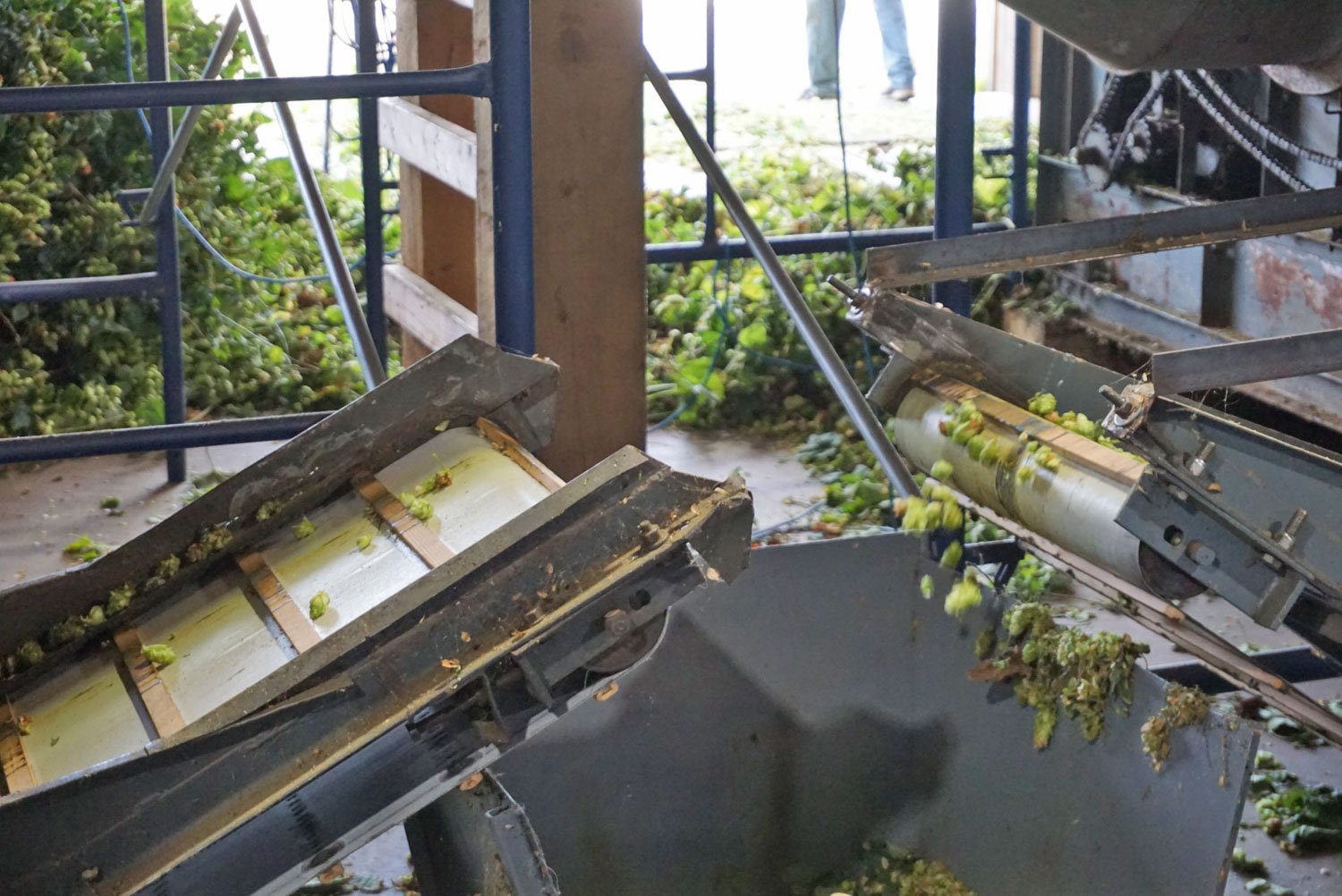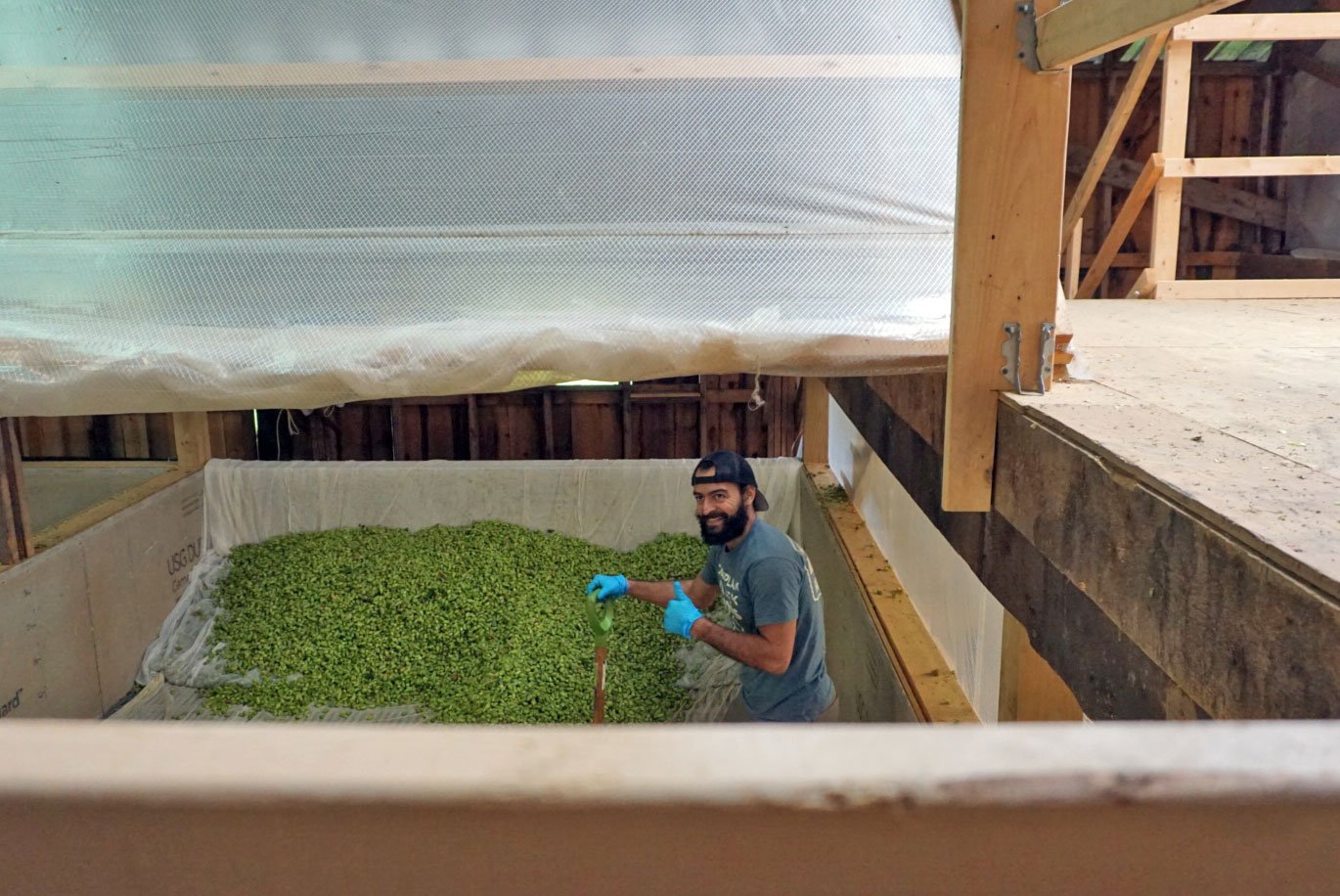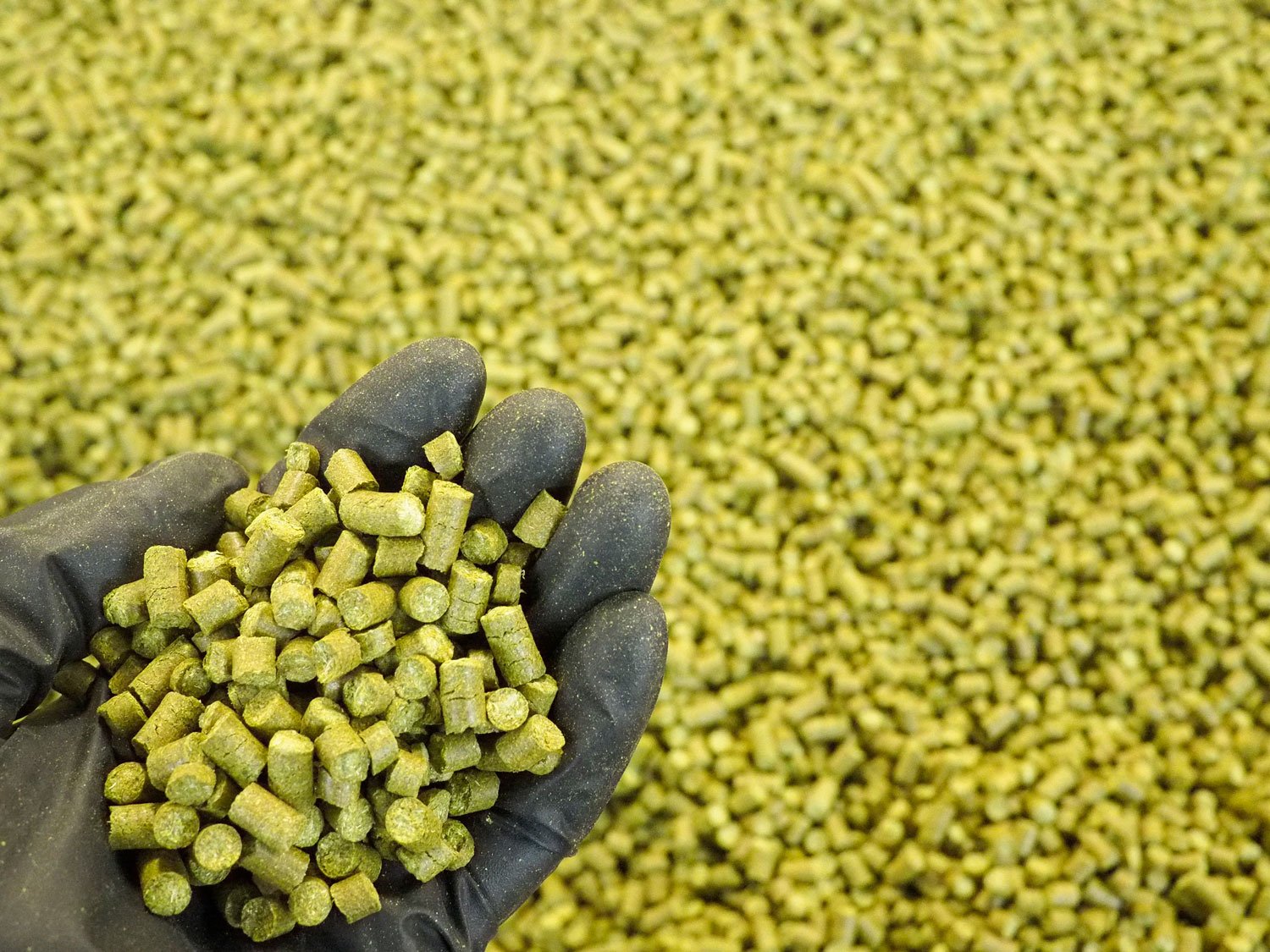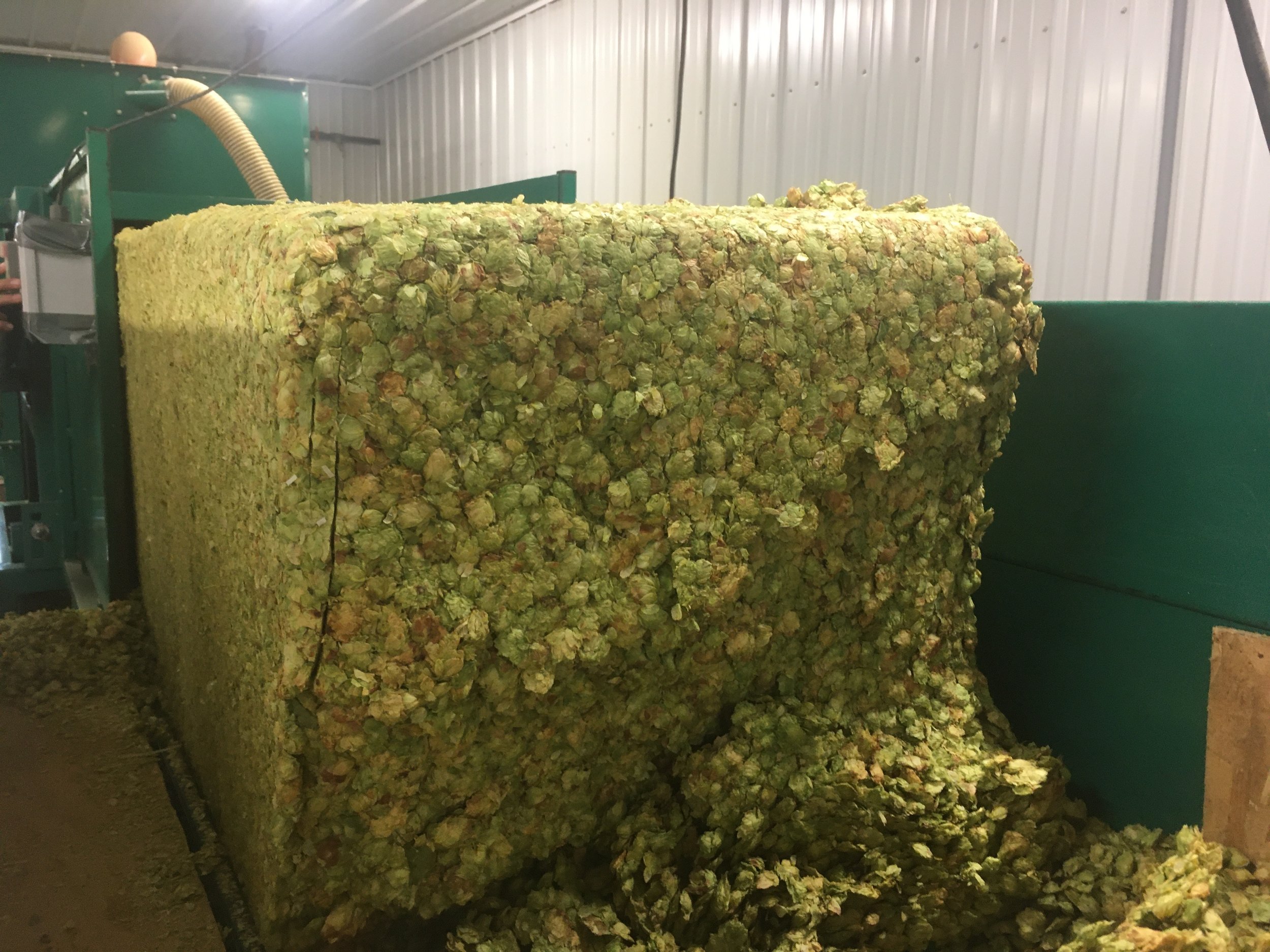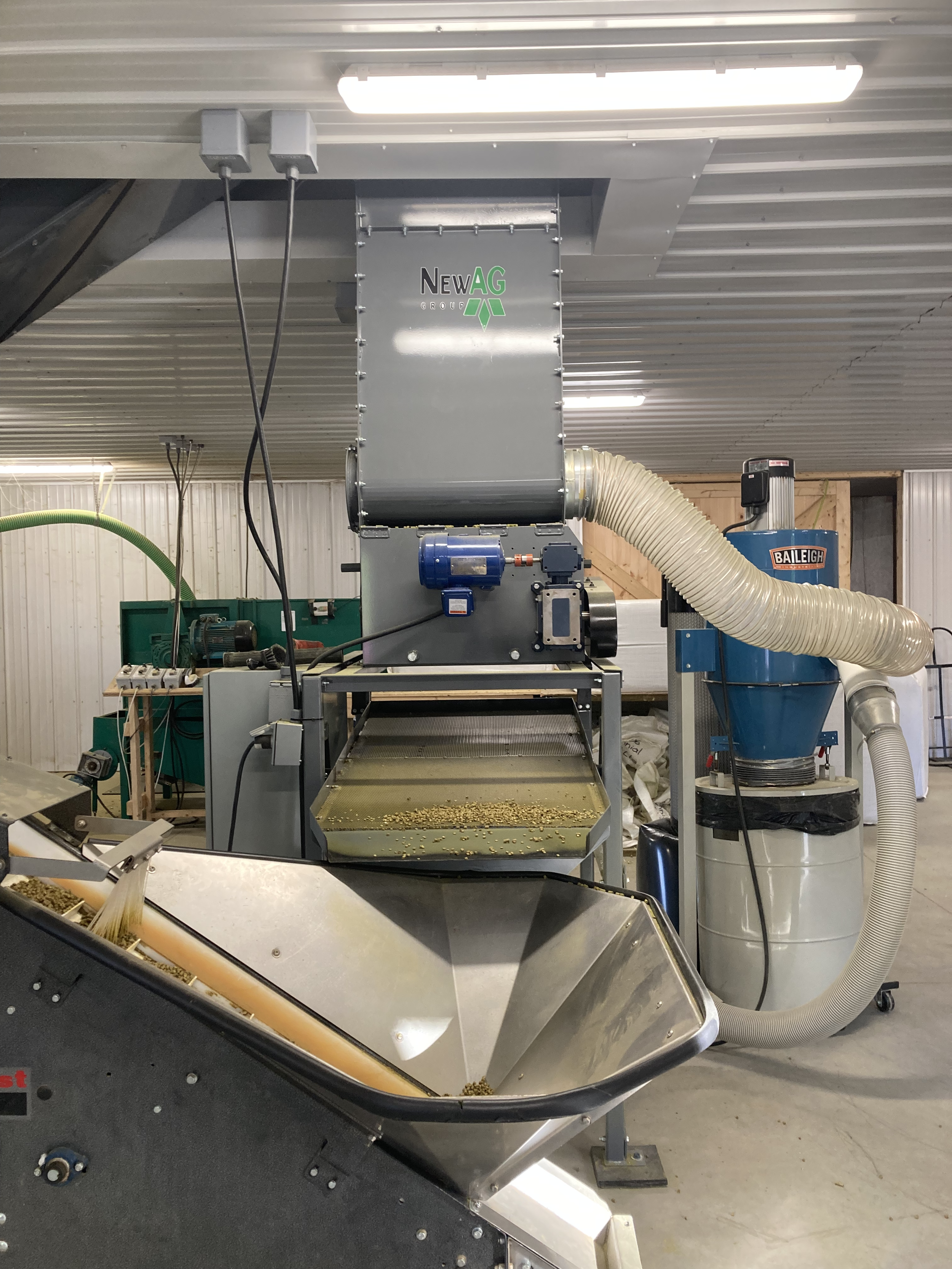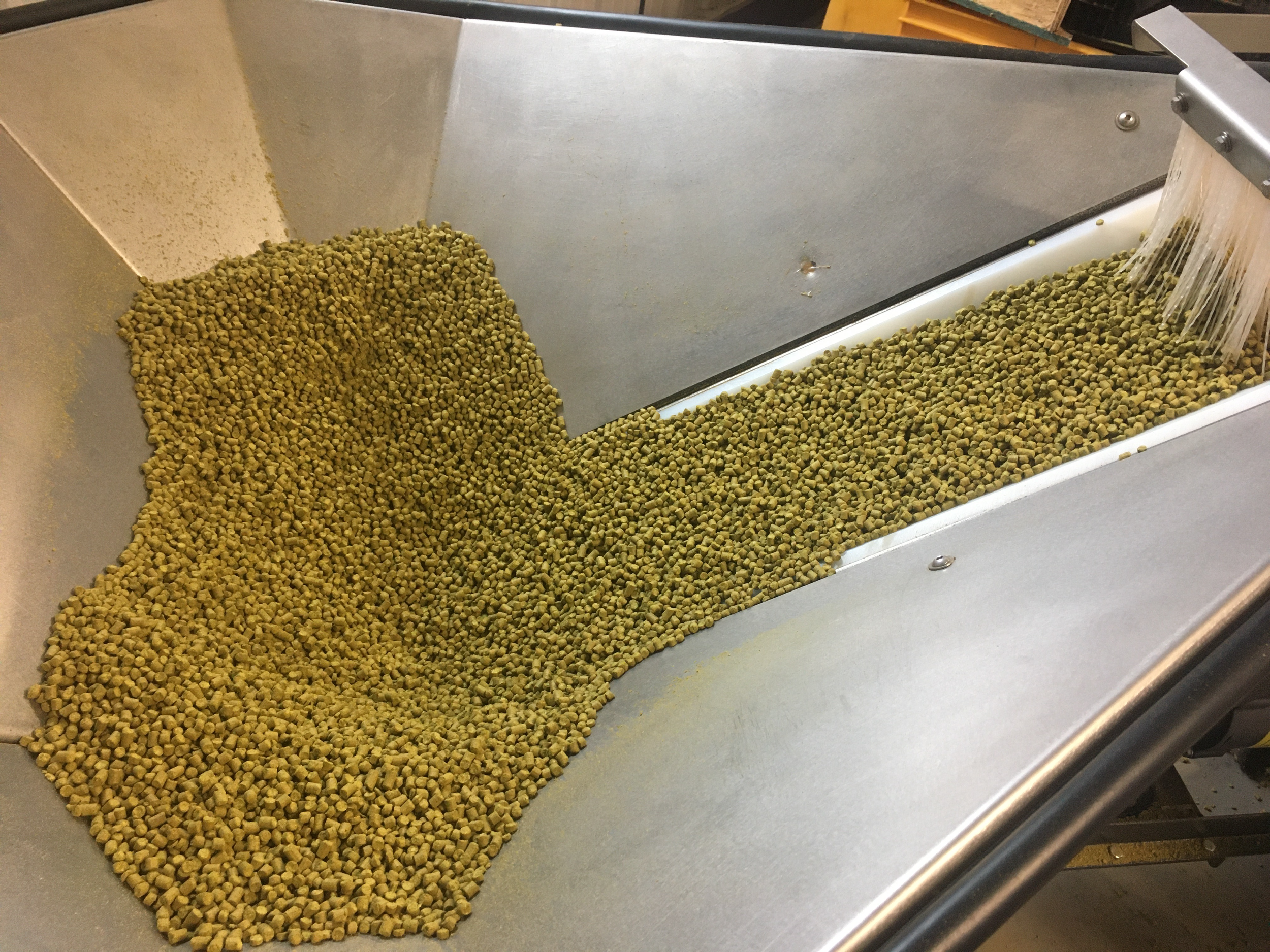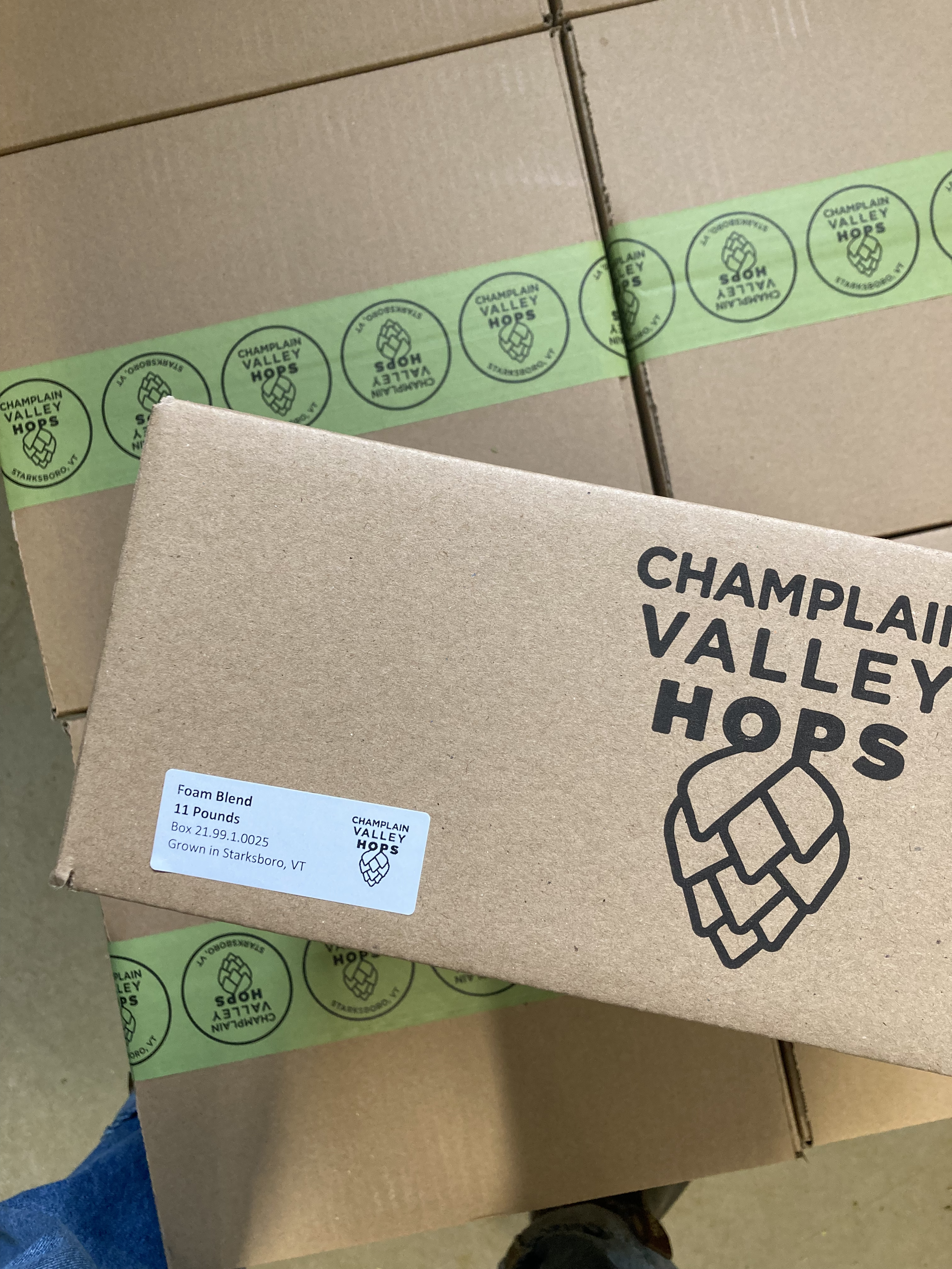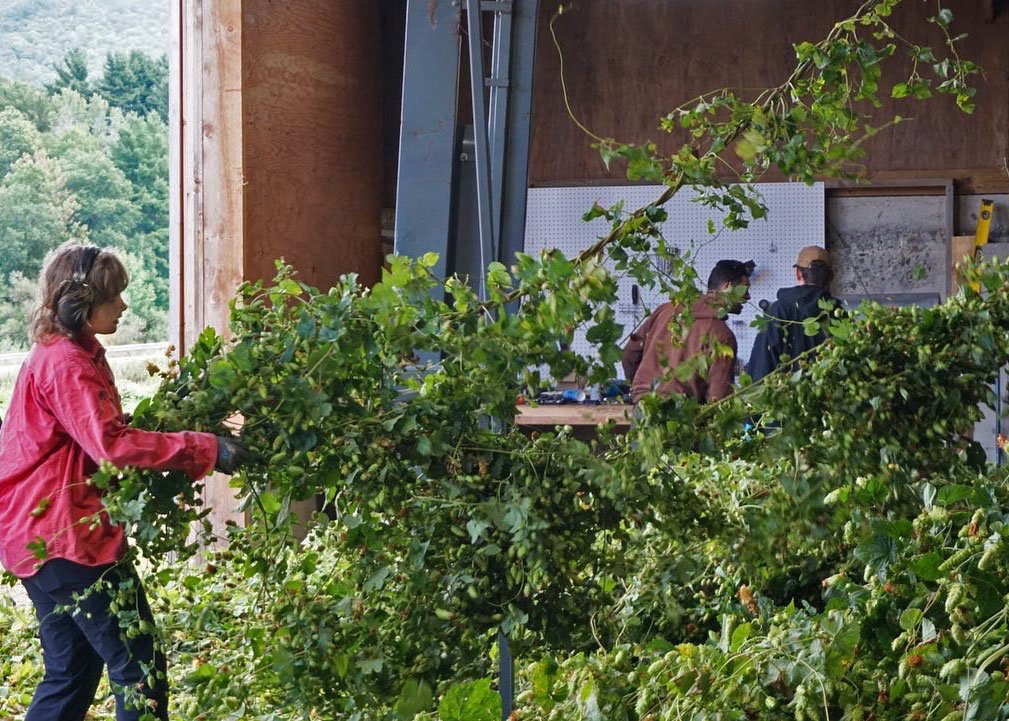
Processing Practices
Good Practices Make Good Beer
We’re unique in New England not only in our growing scale but in our ability to process hops at scale too. This requires a significant investment in both equipment (like German Wolf hop pickers!) and expertise. The equipment needed for every step of the process is incredibly specialized and pretty cool!
It’s all about timing.
Harvesting hops is a lot like launching a rocket: it requires a lot of careful planning, it happens in the blink of an eye, and you only have one chance to get it right.
During harvest time (August and September), we’re constantly out in the hop yard testing our crop to see when it’s perfectly ripe. The key is to catch the hop cones when they’re at peak flavor and aroma, just before they start to turn south. Harvest too early, and you’ll get a lackluster crop. Harvest too late, and your hops could end up tasting like garlic and onions rather than citrus and blossoms.
We test readiness by measuring moisture levels, feeling the texture of the cones, and–most importantly–by smelling.
When we determine that they are ready to be harvested, our hops are first cut and gathered from the hop yard, and taken by wagon to our harvesting barn (one of the old dairy barns on our property). There, the bines are fed into our German Wolf hop pickers, which sort the cones from the rest of the plant matter. The harvested cones are dried in giant kilns after which they’re compressed into 100-150 pound bales that are frozen until harvest is complete.
Pelletizing is a science.
October is pelletizing time!
Hop bales need to be broken up, milled into a fine powder, and carefully pressed into pellets, all at low enough temperatures to preserve their coveted essential oils. Finished pellets are packaged in nitrogen flushed, vacuum sealed Mylar bags, which are then kept frozen to maintain peak freshness.


